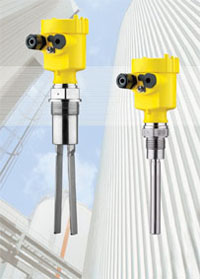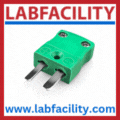
Posted to News on 12th Jan 2007, 20:30
Vegavib and Vegawave both sense solids
Vega Controls is introducing the Vegavib and Vegawave vibrating level switches for level detection of bulk solids. While the Vegavib operates with a vibrating rod, the Vegawave uses a tuning fork.

The central component of both sensors is the piezo-driven vibrating element. When this element is covered by bulk solids, the oscillation amplitude changes; the change is detected and processed by the oscillator and converted into a switching command. This measuring technique does not require adjustment from one medium to the next, and it offers comprehensive fault monitoring up to SIL 2 (according to IEC 61508). These sensors are also available for dust-laden potentiallt explosive (Ex) areas of zone 20 (1D or 1/2D depending on the application).
With its tuning fork, the Vegawave is suitable for applications in powdery media and bulk solids of small grain size. Its robust configuration also allows it to be used for low-level detection in heavy bulk solids such as cement or flour. Even in the case of a buildup of the solid, the Vegawave sensors demonstrate their advantages over the vibrating rod. Vegawave works in bulk solids from a density of 0.008 g/cm³ (8 g/l).
Vegavib, on the other hand, is suitable for applications in large-grained substances due to the vibrating rod that is optimally designed for solids. The material can neither deposit on nor jam the rod. The vibrating rod also demonstrates its special advantages in the pharmaceutical and food and beverage industry – the polished version can be easily cleaned. Typical applications for the Vegavib are overfill and dry-run protection, such as with plastic granules, coarse bulk solids and even feathers. Vegavib measures reliably from a bulk density of 0.02 g/cm³ (20 g/l).
With five different versions of electronics available for both types of vibrating level switch (eg relay output or NAMUR), the right signal output for every control system is assured.
Metior House
Ashdown Business Park
Michael Way
TN22 2DU
UNITED KINGDOM
+44 (0)1444 870055





